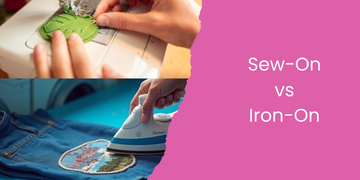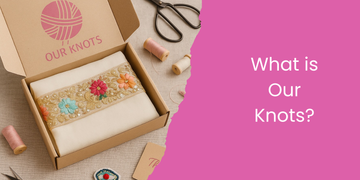When it comes to decorating or repairing clothing, patches for clothes are a versatile and creative solution. Whether you're upgrading your denim jacket, covering up a hole in your jeans, or adding personality to a backpack, patches can do the job in style. But when selecting the best type, a common question arises: should you go with sew on patches or iron on patches?
Both options are popular in the world of custom patches, but which one is right for you? Let’s compare the pros and cons of each to help you make the best choice for your project.
What Are Sew On Patches?
Sew on patches are classic fabric patches that need to be stitched onto garments by hand or with a sewing machine. They have no adhesive on the back and rely entirely on thread for attachment.
Advantages of Sew On Patches:
- Durability: They stay intact even after multiple washes and rough use.
- Strong Hold: Ideal for uniforms, heavy-duty jackets, and workwear.
- Customizability: Stitching allows you to place them creatively in any direction or pattern.
- Best for Non-Iron-Friendly Fabrics: Suitable for delicate fabrics like leather, wool, or nylon where heat might cause damage.
Disadvantages:
- Time-Consuming: Requires effort and sewing skills.
- Not Quick Fix: Not ideal if you're in a hurry or lack sewing tools.
What Are Iron On Patches?
Iron on patches have a heat-activated adhesive backing that sticks to fabric when pressed with an iron. These are the most user-friendly option, especially for beginners.
Advantages of Iron On Patches:
- Easy to Apply: No sewing needed—just press with a hot iron.
- Time-Saving: Fastest way to attach patches to garments.
- Good for DIY Projects: Perfect for kids’ clothes, bags, or accessories.
- Clean Finish: The adhesive backing provides a smooth, seamless look.
Disadvantages:
- Not as Durable: Adhesive may wear off after repeated washes.
- Heat-Sensitive Fabrics: Not suitable for some synthetic or delicate materials.
- Limited Longevity: May start peeling off over time, especially on heavy fabrics.
Which is Better? Sew On vs. Iron On
The answer depends on your use case, fabric type, and how long you want the patch to last.
| Criteria | Sew On Patches | Iron On Patches |
|---|---|---|
| Durability | ✅ Long-lasting | ❌ Can peel off |
| Application Time | ❌ Slower | ✅ Quick & easy |
| Skill Level | ❌ Requires sewing | ✅ Beginner-friendly |
| Fabric Suitability | ✅ Works with all fabrics | ❌ Limited to iron-safe fabrics |
| Wash Resistance | ✅ High | ❌ Medium |
If you want something long-lasting, go with sew on patches. If you need something quick and simple, iron on patches are your friend. And for those who want the best of both worlds, you can iron the patch on for initial placement and then sew it for extra security.
Pro Tip: Combine Both Methods
To ensure maximum hold, many people iron on the patch first and then sew around the edges. This hybrid method offers both ease and durability.
Use Cases: Which Patch Fits Best?
- School uniforms – Go for sew on patches for long-term durability.
- Event giveaways – Choose iron on patches for fast application.
- Backpacks or hats – Sew on is ideal since these items undergo rough use.
- Fashion DIY projects – Iron on patches are easy for personal customization.
- Custom branding patches – Prefer sew on custom patches for professional and lasting appeal.
Where to Buy Quality Custom Patches?
When looking for high-quality, custom-designed patches for clothes, always choose trusted suppliers who offer both options. Websites like Ourknots provide a wide range of custom patches with flexible backing options—perfect for all your needs.
FAQs
Yes, but it's recommended to wash them in cold water and avoid high heat drying to prolong their life.
You can use a needle and thread to stitch manually around the edges of the patch. It may take longer but is just as effective.
No, these materials are not heat-friendly. Use sew on patches instead.
Yes, many custom patches come with both options—iron on for quick placement and sewing for durability.
Typically 20–30 washes with proper care, but sewing increases their life significantly.
Final Word: Choose What Works for You
Whether it’s durability or convenience you’re after, both sew on and iron on patches for clothes offer unique benefits. Just remember your garment type, purpose, and how often you’ll be washing the item. For the best outcome, consider combining both methods for your custom patches.






